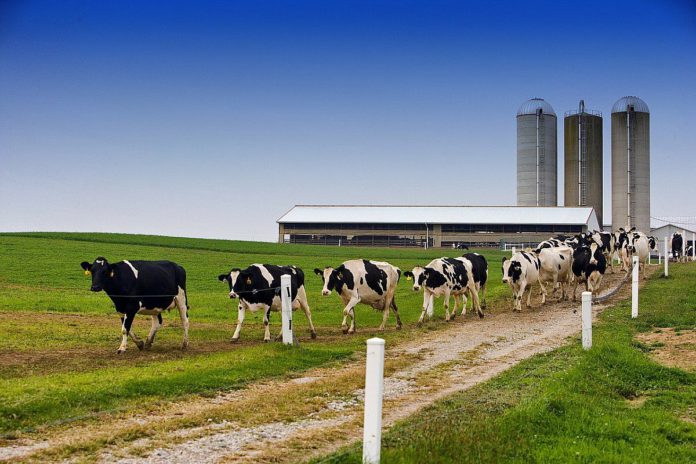While Covid-19 has challenged us all throughout the past 12 months, dairy farmers will face a new challenge in 2021, trying to improve the sustainability on their farms, writes John Greaney, Teagasc/Aurivo Joint Programme Dairy Advisor.
Whether farmers like it or not, the Irish dairy industry is entering a new era with greater focus being placed on the environment.
Furthermore, EU and national Government policies are asking more of dairy farmers in the sustainability area.
The requirement to improve sustainability will require a reduction in nutrient loss to water, a reduction in both greenhouse gases (GHG) and ammonia emissions and improvements in habitats for biodiversity.
Action
Key actions to be undertaken will be guided by both the Teagasc GHG and ammonia marginal abatement cost curves (MACCs) and will include:
- A continued focus on the improvement of nutrient use efficiency (both Nitrogen and Phosphorous).
- A focus on grassland management to increase pasture utilisation, increase clover content and overall reduction in chemical N fertiliser use.
- The implantation of appropriately designed ecological measures to halt the decline of biodiversity.
- The implementation of targeted actions to reduce risk of point source (farmyard) and diffuse (land) losses of nutrient to water.
Potential size and shape of sector by 2027
It is envisaged cow numbers will rise to 1.65million by 2027, with milk output increasing to 9.5 billion litres.
There will be 17,000 dairy farms in the country and the average herd size will increase to approximately 100 cows.
Production figures will improve as average milk delivered per farm will increase to 555,750 litres at 3.60% protein and 4.40% fat.
Continuous declines in water quality and increases in Green House Gas (GHG) and Ammonia emissions will make it more difficult to secure future derogations.
In 2020, just shy of 6,500 derogation applications were submitted and eight new changes have since come into effect. Farmers must be conscious they are compliant heading into the New Year.
Below is a list of the guidelines farmers must adhere to:
-
Compulsory liming programme
- To date from January 2020, farmers must have implemented a full scale liming program based on soil sample results on all lands farmed with the exception of conacre farmed on a 1 year basis.
- Lime applications must be recorded on the annual fertiliser records with invoices retained for inspection.
- The quantity of lime spread since the date of soil samples will be taken into account.
-
Low Emission Slurry spreading
- For 2021 all slurry spread must be done so using LESS equipment.
- The volume of slurry spread by LESS must be recorded on annual records.
- Applicants are required to have evidence of own machinery or contractor receipts where hired in LESS machinery is being used.
-
Reduction in Crude Protein % to dairy cows of meals at grass
- For 2020 farmers should only have fed a max of 16% Crude Protein Rations to livestock with 100% grass diets from 1st April- 15th September
- For 2021, farmers can only feed a max of 15% Crude Protein Rations over the same period.
- The crude protein content is to be recorded on feed statements.
-
Attendance at compulsory environmental training course
- All farmers must attend an environmental training course before December 31st, 2021.
- Proof of attendance will be required.
-
Grassland management
- Applicants must complete a minimum of 20 grass measurements on Pasturebase Ireland or attend a grassland management course before December 31st, 2021.
-
Inclusion of clover in grass seed mixtures
- Grass seed mixtures used must contain a minimum of 1.5 kg per hectare of naked white or red clover seed in mixture or 2.5kg per hectare of pelleted clover seed from the beginning of 2020.
-
Exclusion of commonage/rough grazing
- Lands that are declared as Commonage or Rough Grazing on the BPS application will be allocated a maximum of 170 kg organic N per Hectare with resultant reduced allowance of chemical fertiliser.
-
Improve farm biodiversity
- Introduced from January 2020, applicants must either leave one mature Whitethorn or Blackthorn tree in every 300m of hedgerow or maintain hedges on at least a three-year cycle to encourage hedgerow flowering and fruiting.
More red tape for farmers going forward
Although there is a negative perception towards the new EU and national Government policies, this is not the case at farm level.
Yes, there will be more red tape going forward but farmers are custodians of the land and strive to pass their holdings onto the next generation in a better place.
We have all adapted our lifestyles in 2020 and I’ve no doubt dairy farmers will embrace the changes ahead.
On behalf of Teagasc, I would like to wish all our readers a happy and safe Christmas. Best wishes for 2021.





